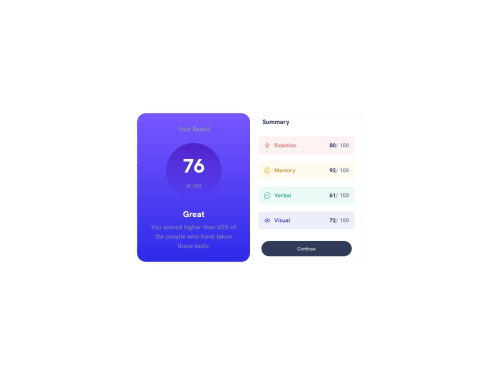Results Component with JSON Data

Solution retrospective
🎃 Results Summary Component with JSON data used 🎃
🤓 Questions
- Is there any best practices with the way I have written / used the JSON data I am breaking?
- I used
<div>elements inside the<section>elements, and I did this because I thought, when the checks happen a section needs a heading, right? So, I am not putting on in those sub-sections (The<div>elements~) so, using a section is weird, so, I used a generic containing element. My question is, was this the right choice, or should I have used an article? That didn't make sense to me either, but, advice please. :)
👀 Known Issues
- Currently this is failing the color contrast checks for the grey in the summary panels, I intend to fix that ...soon. 🥲
- I am not happy with the width on the container (I used percentage) - I really don't know why I did, I cant remember, but, I don't like it, I do intend to change that as well.
- Font types (the extension) I haven't converted them yet, I will do that in a hot minute.
- The heading "Your result" on the purple panel, the color is a little hard to read as well, I had previously changed the color and updated the variable but never changed that heading color which is the reason. I will change it.
🫣 Posting despite the above listed issues because I have had this on my to-do list to post for 3 days now.... that is procrastination and I literally want to start the week on a better footing, LOL!!
Please log in to post a comment
Log in with GitHubCommunity feedback
No feedback yet. Be the first to give feedback on Kirsten ✨'s solution.
Join our Discord community
Join thousands of Frontend Mentor community members taking the challenges, sharing resources, helping each other, and chatting about all things front-end!
Join our Discord